
TL;DR:
- We see an overall decline in IT occupations by 1% of the total workforce as the whole economy is reeling from the impact of the healthcare crisis caused by COVID-19 and the economic recession.
- 70% of industries have frozen all hires or had to lay off employees.
- However, the IT, Financial, and Professional Services industries continue to hire and are driving demand primarily to engineering positions.
- Engineering job hires increased steadily during March and April, and there’s the expectation that this will continue to rise during May.
- Companies who are hiring in IT are focusing on the roles of Software and App Developers, User Support Specialists, System Engineers, and Web Developers.
The tech sector has been resilient in the face of the global healthcare crisis and the economic downturn. While it has felt the negative impact of these with some of the worst job loss numbers in the sector’s history, it’s also added a considerable amount of jobs and open positions.
Our objective with this article is to inform you through data and statistics about the tech sector’s continued performance and hiring of tech roles. We’ll continue to update this throughout 2020. We also provide our opinion as to what this means for the industry and where we feel it’ll go forward.
Looking at IT Job Postings and Industry Hiring Data.
Tech positions have become increasingly important at this time, especially with businesses moving their operations digitally and implementing work from home policies. However, economic recessions hit industries differently, which spills over to affect IT employment overall.
To understand the complete picture, we took a look at overall IT sector job postings and overall industry hiring data and trends over the last three months.
By looking at the IT sector job postings statistics, we can see the changing volume of hires, job postings, and lay-offs. It provides us with a 30,000 feet view of the tech sector employment. However, this only tells us half of the story.
To get the whole story, we look at industry hiring data, which provides insights into the individual industry impacts and gives us a detailed look at those who are still hiring, the areas they are hiring for, and the positions.
Using these two perspectives, we’re able to conclude as to what’s the current state of IT hiring, how it’s affecting industries, who are still hiring, and what they are hiring.
Let’s remember that there are two trends at play here. One of the industries being severely affected and having to reinvent themselves, and sectors that have not been hit too hard and have relied heavily on their tech teams to continue surviving, growing, and innovating.
Tech Employment’s Worst Decline Ever.
March and April brought the worst net loss of IT occupations across the US economy in recent memory. With a combined loss of over 150,000 jobs. This decline pushed the unemployment rate of IT occupations to 4.4% from 2.3% during the month of February – a pace that had been holding steady since last year.
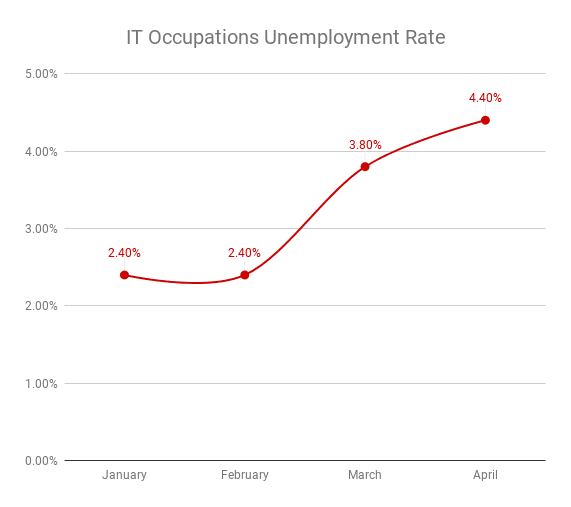
However, there’s a silver lining in the middle of this data. Even as net job losses rise, there’s been an increase in hiring in some industries during these months, specifically in the IT Sector.
March added 16,000 new IT workers and 18,900 in April, which are considerably more than were seen in January with 15,800 additions and February, with 11,500 additions. There seems to be an unusual trend appearing, an acceleration of tech hiring in the IT sector. We’ll have to wait and see the May data for a complete picture and see if this is a trend related to the increasing demand for tech services in these last two months.
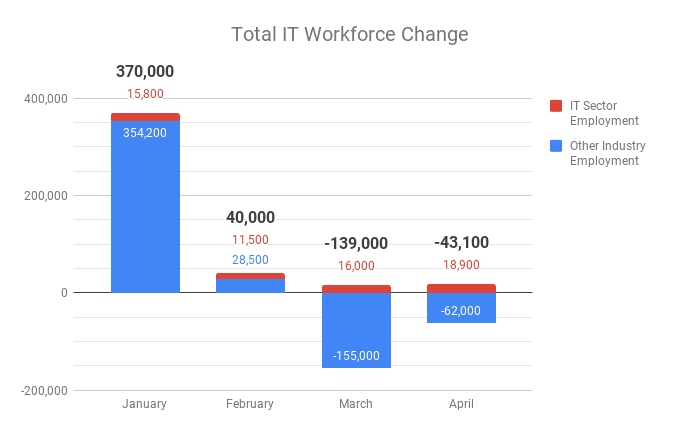
We must also take into account the opening of the economy. With it, the expectation is that as it starts to reactivate it will slowly neutralize job losses and reverse the trend.
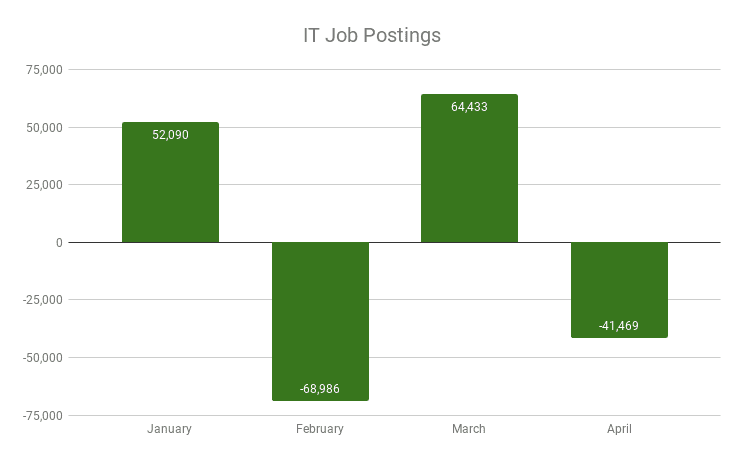
Of the IT Job postings that companies added to the labor market between March and April, the larger majority are roles of Software and Application Developers, User Support Specialists, System Engineers and Analysts, and Web Developers.
Most of the in-demand talent are positions that support existing infrastructure, support customers using their services, and build on their current solutions to meet market demand.
It’s clear that technology is now at the forefront of many companies’ strategic plans as 2020 unravels.
When 50-60% of Companies Freeze all their hiring.
When the outbreak started peaking at the end of March and through April, approximately 60% of companies froze their hiring efforts or had to lay off employees.
Industries that felt the negative impact the most were Travel, Hospitality, Marketing, and Advertising, to name a few.
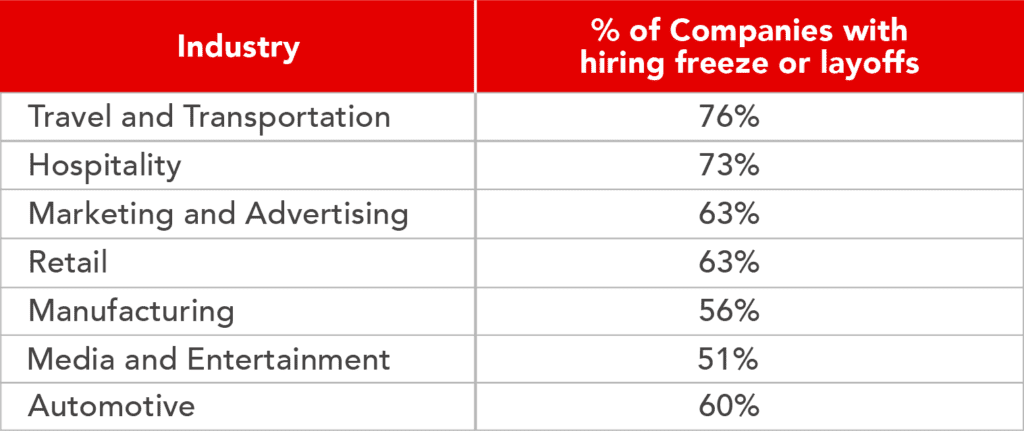
During this same period, at CodersLink, we saw companies in the Retail, Finance, B2B Enterprise, and Pharmaceutical Industries freezing all hiring.
This freezing of job openings is consistent with the above-mentioned IT occupations data, which saw March and April accelerate in job losses, which are entirely eclipsed when looking at the broader economy, where industries have lost up to 20-30% of their workforce.
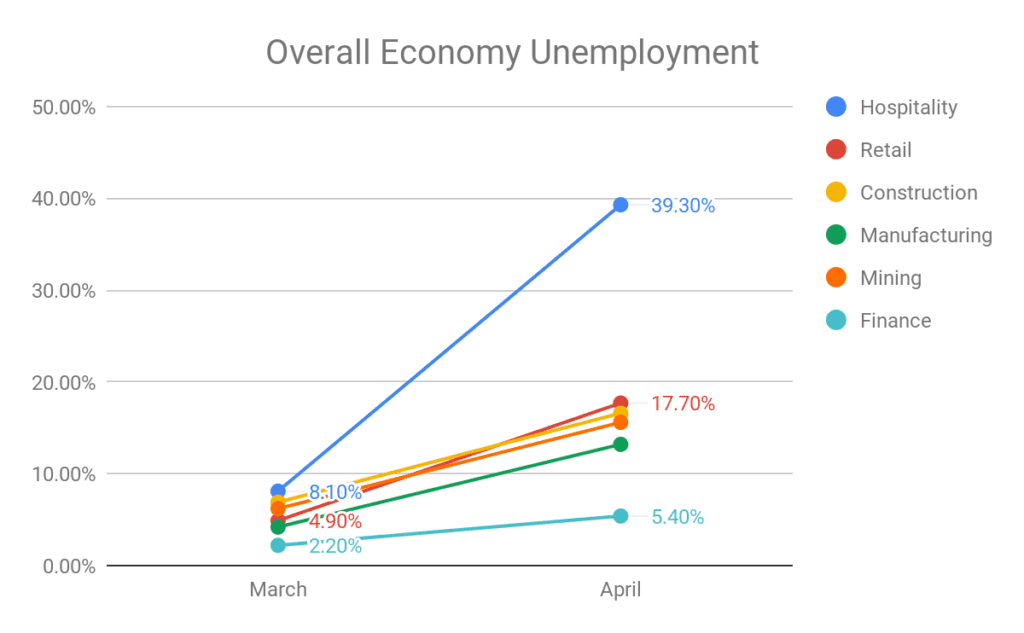
We know recessions hit industries unevenly, with sectors that provide discretionary services, non-essential services, or leisure services taking the worst hit.
This gives us a glimpse as to how companies are making decisions to cope with the economic impact of the recession, signaling that the first places to cut costs don’t come from the technology tech department in the majority of companies. On the flip side, they appear to have become crucial for providing continued service, staying in touch with customers, and innovating.
On the other side, industries that continued to hire amidst the lockdown were Healthcare, IT, and Financial Services, to name a few.
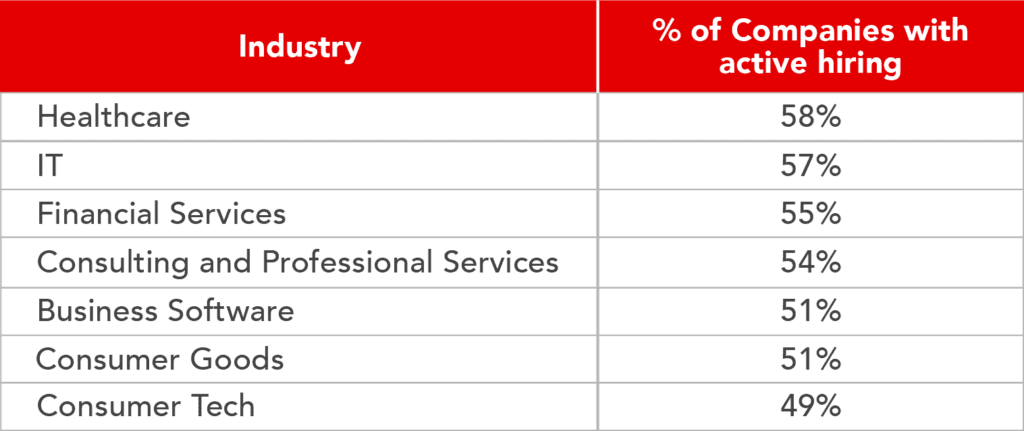
This is also consistent with the data we see in the unemployment rate and job creations in the IT sector. The sectors of Finance, IT and Professional Services have proven to be resilient during these times and have driven job creation.
The question then becomes, are there companies that are still hiring, and if so, what positions are they hiring?
Applicants Needed: Engineering, Sales, and Marketing.
This last piece of information will give us an insight into why the IT hiring sector is in a bitter-sweet position.
When looking at various lists of companies that are still hiring and segmenting them by the currently available roles, we see the importance of tech, sales, and marketing roles.
Of the companies that are still currently hiring, it’s immediately apparent what their focus is: Engineering, Sales, and Marketing.
Here’s how we see their hires distributed:
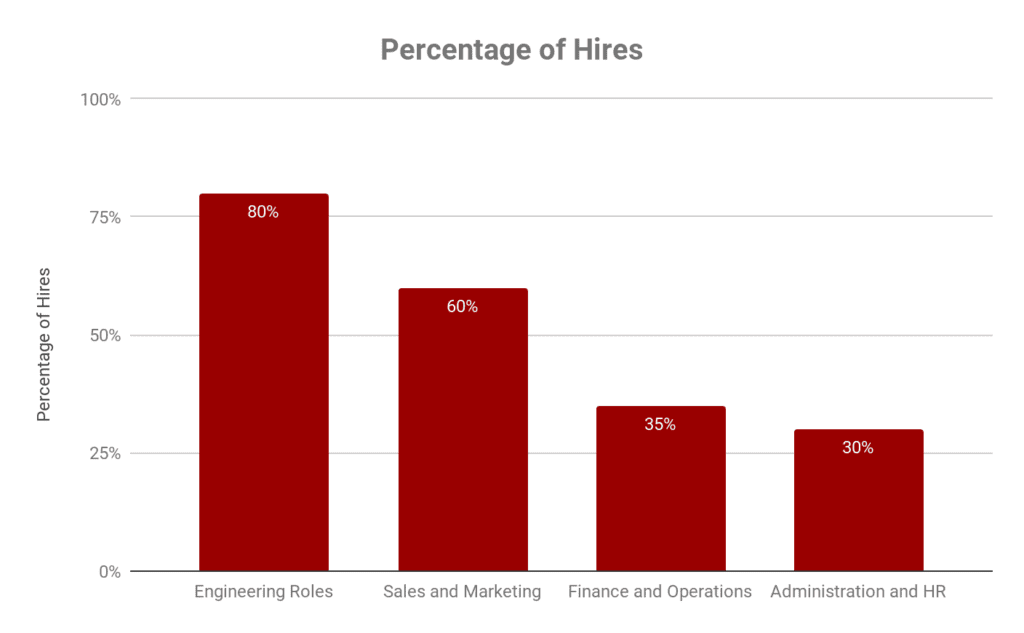
*It’s important to note that a single company can hire for multiple roles.
Again, we’re seeing that technology is playing an essential role in the company’s strategies. It’s also worth noting that of those industries that are still hiring, most of them rely heavily on technology applications or provide technology applications to customers.
While IT occupations have been suffering from significant job losses across industries, there is still some rising demand for tech talent led by the IT, Financial, and Business Sectors.
Closing Thoughts
It’s still too early to conclude where the IT hiring market will move towards, but one thing is clear: if they weren’t before, they are now a fundamental part of many companies’ strategies.
Technology has always been an essential part of all companies, but in today’s circumstances, they have become a critical part of their strategy. Some will turn to technology to reinvent themselves, to innovate and rise above this downturn, and others will turn to technology to support increasing demand. Whatever that might be, we expect more industries to become more technologically adept and immerse.
Seeing the 70% increase in internet usage during March and April, we can only expect to see more demand for online services, more demand for enterprise and consumer solutions, and an increased need for support and security. We believe this effect will continue into 2021.
Looking to hire remote employees? Download our free guide here.
Resources:


